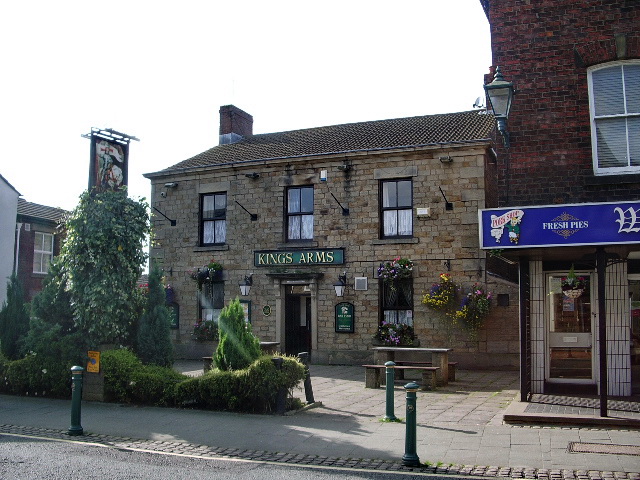The King's Arms
From Swine Market to Pub Take me here now
Local Historian Paul Smith talks about the history of The King's Arms.
Make sure your volume is on: "The King's Arms"
The first thing that surprises many of our visitors is that Garstang once possessed no less than 15 public houses. And this is testimony to the fact that the important economic era for this town stems from the period 1750 to 1840, which was the heyday of the horse drawn post carriage. And in those days, carriages used to arrive in our streets day and night and they would have passengers who would be in need of food and drink and somewhere to get their head down for the night. The pub names have changed somewhat over the years, but they are nonetheless interesting. There was the Blue Anchor, the Red Lion, the Swan Inn, the Bowl Alley, the Pack Horse, the King's Arms, the Eagle and Child, the Golden Ball, the Horns, the Brown Cow, the Shovel and Broom, the Wheatsheaf, and the Cathouse.
We have the King's Arms, which was so named after the execution of King Charles I in 1648 and pubs called the King's Arms began life as the King's Head, noting as it were, the decapitation of Charles I at White Hall. But after the restoration in 1660, the name the King's Head became less and less popular for political reasons.
When Gary established his settlement in pre-Christian Times, the main street consisted of very primitive dwellings arranged on each side of the road we now call Park Hill Road. And contained within that small community was an open area called the Old Swine Market. At the bottom of the swine market was the ancient market cross the area now in front of the King's Arms Hotel. And this cross was removed in Georgian times to allow the coach traffic to move through. But it's hard to imagine that if you see this car park, this was where livestock was brought on market days at Garstang.
This page is part of Garstang Heritage Trail
